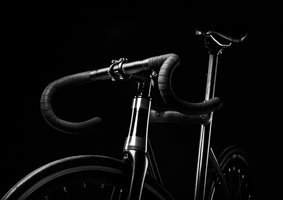-
Is your bike ready?
- Posted onliz
- in Cycling
- onAugust 2, 2017
- No Comments.
 You are working towards your goal of finishing your first triathlon or competing well in your second triathlon. You intend to be well prepared but is your bike? This article looks at how you should prepare your bike for a triathlon.
You are working towards your goal of finishing your first triathlon or competing well in your second triathlon. You intend to be well prepared but is your bike? This article looks at how you should prepare your bike for a triathlon.You don’t have to go out and buy a new bike for your first triathlon but you should make the most of the bike that you have and have everything you need on your bike to have a great experience.
Keeping hydrated
You should have 2 bottle cages on your bike, one on the down tube and one on the seat tube. These are cheap to buy and easy to fit. (Here, I am assuming that you are on a road bike as opposed to a Time Trial bike with a built in hydration system!)
If you are taking part in a sprint distance triathlon then you will only need to take one bottle of energy/electrolyte drink with you during your race, but you will need two bottle cages for your longer rides during training.
Under pressure
Time to get a track pump. For many new triathletes, this is a a special day – the day you buy your first track pump and become a serious cyclist. You must do it.
Whatever sort of tyres you are using on whatever sort of bike, you need to appreciate that the softer the tyre, the more surface area of tyre is in contact with the ground and the more rolling resistance your bike will have. This means you will have to work harder to acheive a given speed so having the right tyre pressure is very important when it comes to performance.
(Note: sometimes you need to have more ground contact and should soften the tyres i.e., in wet conditions)
For road bikes, general training, aim for 90 psi (6.2 bar) for a rider 70 kg (add 2 psi for every 5 kg over 70kg and subtract 2 psi for every 5kg under 70kg) . Mountain bike tyres are, when ridden off road, ridden at a lower pressure than road tyres (36 psi (2.5 bar) so that the tyre can grip the terrain. If you are using a mountain bike for your first triathlon you may want to switch to slick (smoother) tyres and increase the tyre pressure.
You should know about tyres
If you are new to triathlon then changing your tyres for a race may seem like a faff but even if this is the case you should know what your options are. The type of tyre you are riding on affects your rolling resistance and therefore your speed. It is usual to use robust and gripping tyres for winter riding and training and then switch to slicker or smoother tyres for racing. Racing tyres will not be as puncture resistant as a winter tyre but you will be able to acheive a faster ride!
At some point it will happen!
You really do need to know how to deal with a puncture. As your training rides get longer, you will be farther from home! You need to be self sufficient carrying everything you need in a small pack carried underneath your seat.
There are a number of ways to deal with a puncture. As a novice triathlete it is likely that you are using clinchers (type of tyre) and inner tubes so, in the event of a puncture you need to change the inner tube and then inflate the tyre using either a small pump held on your down tube or small CO2 gas cartridges. (Not many folk would repair the inner tube!).
More on how to change an inner tube in a further post.
You can carry everything you need, two spare inner tubes and tyre levers in a small pack that hangs under the saddle. What about in a race? In a paragraph below we talk about reducing the weight of your bike and not carrying anything you don’t need, when you are actually racing. So what about your inner tube changing kit. I always think that this is a personal choice.
If this is your first triathlon, you will want to finish it – you don’t want to risk having a puncture and then either walking back to transition or waiting for a support vehicle. Practice, carry the kit and be sure to finish.
But if you are looking to win the event, and only a podium place will do, then you will probably be prepared to ditch the kit to reduce weight on the bike. If you puncture then your race will be over for you in the case.
Finely tuned racing machines
It is a great idea to have your bike serviced ideally before you start your training in earnest but certainly 6 weeks before the event – again to reduce the risk of race malfunctions. At the same time, take a look at your bike – anything that can be removed to make your bike lighter?
For your next race …..
What else could you want on your bike? As you develop as a triathlete you will learn that being aerodynamic on a bike plays a fundamental role in racing performance. Aero bars that can be clipped on to your bike, so that you can acheive an aerodynamic position, will be something to consider maybe for your next season.
If you enjoyed this article please consider sharing it!




